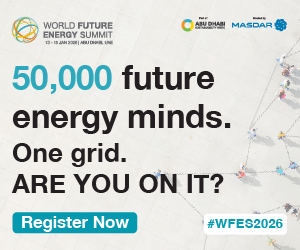Post - Articles
In a move to reduce dependence on imported fossil fuel, especially from Russia, the European Commission has published its strategy for an energy union with better grids and pipelines to improve energy sharing across the 28 member states.

WFES 2026 (World Future Energy Summit)
The Commission says the plan would lower costs by increasing consumer options, integrating renewable supplies and reducing the need for expensive imports.
Climate Action and Energy Commissioner Miguel Arias Canete said: “Europe is losing up to €40 billion a year by not having a fully connected energy market,” citing research carried out for the Commission.
Canete added that the Commission would release a “country-by-country plan” to achieve a goal of ensuring cross-border links equate to at least 10 per cent of a nation's power generation capacity by 2020.
The overall amount of investment needed in EU energy infrastructure is around €200 billion between now and 2020. Of this, the cost of reaching the 10 per cent goal is roughly €40 billion, the Commission says, meaning it would be soon offset by the predicted savings.
The Commission says 12 member states do not have enough connection to the rest of the EU electricity market: Britain, Cyprus, Estonia, Ireland, Italy, Latvia, Lithuania, Malta, Poland, Portugal, Romania and Spain.
It proposes to change that through a list of priority projects, entitled to faster planning procedures and some EU money that the Commission hopes will leverage much greater private investment.
The Energy Union also represents a more concerted attempt to end over-reliance on Russian gas, with the EU currently importing 53 per cent of its energy. The bulk of Russian gas imports to the EU pass through Ukraine, and the recent unrest in the region has raised concerns that Russia could once again turn off supplies to Europe, as it did in 2009.
